INTRODUCTION
About Poems:
A verbal composition designed to convey experiences, or emotions in a vivid and imaginative way, characterized by the use of language chosen for its sound and suggestive power and by the use of literary techniques such as meter, metaphor, and rhyme.literary composition written with an intensity or beauty of language more characteristics of poetry than of prose.
About Kavya:
Kavya, highly artificial Sanskrit literary style employed in the court epics of India from the early centuries ad. It evolved an elaborate poetics of figures of speech, among which the metaphor and simile predominate. Other characteristics of the style are hyperbole, the careful use of language to achieve a particular effect, a sometimes ostentatious display of erudition, and an adroit use of varied and complicated metres—all applied to traditional subjects and themes derived from early popular epics.
About Mahakavya:
Mahakavya, a particular form of the Sanskrit literary style known as kavya. It is a short epic similar to the epyllion and is characterized by elaborate figures of speech.
POEMS
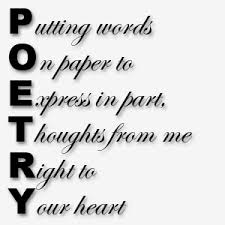
1. A verbal composition designed to convey experiences, or emotions in a vivid and imaginative way, characterized by the use of language chosen for its sound and suggestive power and by the use of literary techniques such as meter, metaphor, and rhyme. literary composition written with an intensity or beauty of language more characteristics of poetry than of prose.
2. A composition in verse, usually characterized by concentrated and heightened language in which words are chosen for their sound and suggestive power as well as for their sense, and using such techniques as metre, rhyme, and alliteration.
3. A literary composition that is not in verse but exhibits the intensity of imagination and language common to it: a prose poem.
4. Anything resembling a poem in beauty, effect, etc.
5. A composition in verse, esp. one characterized by a highly developed form and the use of heightened language and rhythm to express an imaginative interpretation of the subject.
6. Something having qualities that are suggestive of or likened to those of poetry.
History of poetry
Poetry as an art form may predate literacy. The earliest poetry is believed to have been recited or sung, employed as a way remembering oral history, genealogy, and law. Poetry is often closely related to musical traditions, and the earliest poetry exists in the form of hymns (such as the work of Sumerian priestess Enheduanna). Many of the poems surviving from the ancient world are recorded prayers, or stories about religious subject matter, but they also include historical accounts, instructions for everyday activities, love songs, and fiction.
Many scholars, particularly those researching the Homeric tradition and the oral epics of the Balkans, suggest that early writing shows clear traces of older oral traditions, including the use of repeated phrases as building blocks in larger powtic units. A rhythmic and repetitions from would make a long story easier to remember and retell, before writing was available as an aidememoire. Thus many ancient works, from the Vedas to the Odyssey ( 800 –675 BC), appear to have been composed in poetic from to aid memorization and oral transmission, in prehistoric and ancient ancient societies. Poetry appears among the earliest records of most literate cultures, with poetic fragments found on early monoliths, runestones and stelae.
The oldest surviving fiction poem is the Tale of the Shipwrecked Sailor, written in Hieratic and ascribed a date around 2500 B. C. E. Other sources ascribe the earliest written poetry to the Epic of Gilgamesh written in cuneiform; however, it is most likely that The Tale of the Shipwrecked Sailor predates Gilgamesh by half a millennium. The oldest epic poetry besides the Epic of Gilgamesh are the Greek epics Iliad and Odyssey and the Indian Sanskrit epics Ramayana and Mahabharata. The longest epic poems ever written were the Mahabharata and the Tibetan Epic of King Gesar.
Ancient thinkers sought to determine what makes poetry distinctive as a form and what distinguishes good poetry from bad, resulting in the development of “poetics”,or the study of the aesthetics of poetry. Some ancient societies, such as the Chinese through the Classic of History, one of the Five Classics, developed canons of poetic works that had ritual as Well as aesthetic importance . More recently, thinkers struggled to find a definition that could encompass formal differences as great as those between Chaucer’s THE CANTURBARY TALES And MATSUO BASHO’S OKU NO HOSOMICHI, as well as differences in context that span from the religious poetry of the Tanakh to love poetry to rap.
Context can be critical to poetics and to the development of poetic genres and forms. For example, poetry employed to record historical events in epics, such as Gilgamesh or Ferdowsi’s Shahnameh, will necessarily be lengthy and narrative, while poetry used for Liturgical purposes in hymns, psalms, suras, and hadiths is likely to have an inspirational tone, whereas elegies and tragedy are intended to invoke deep internal emotional responses. Other context include music such as Gregorian chants, formal or diplomatic speech, political rhetoric and invective, light hearted nursery and nonsense rhymes, threnodies to the deceased and even medical texts.
DEVELOPMENTS IN POETRY

Classical and early modern Western traditions
Classical thinkers employed classification as a way to define and assess the quality of poetry. Notably, Aristotle's Poetics describes the three genres of poetry: the epic, comic, and tragic, and develops rules to distinguish the highest-quality poetry of each genre, based on the underlying purposes of that genre. Later aestheticians identified three major genres: epic poetry, lyric poetry and dramatic poetry, treating comedy and tragedy as subgenres of dramatic poetry. Aristotle's work was influential throughout the Middle East during the Islamic Golden Age, as well as in Europe during the Renaissance. Later poets and aestheticians often distinguished poetry from, and defined it in opposition to, prose, which was generally understood as writing with a proclivity to logical explication and global trade. In addition to a boom in translation, during the Romantic period numerous ancient works were rediscovered.
History and development of Chinese poetry
The Classic of Poetry, often known by its original name of the Odes or Poetry is the earliest existing collection of Chinese poems and songs. This poetry collection comprises 305 poems and songs dating from the 10th to the 7th century BC.The stylistic development of Classical Chinese poetry consists of both literary and oral cultural processes, which are conventionally assigned to certain standard periods or eras, corresponding with Chinese Dynastic Eras, the traditional chronological process for Chinese historical events. The poems preserved in written form constitute the poetic literature. Furthermore, there is or were parallel traditions of oral and traditional poetry also known as popular or folk poems or ballads. Some of these poems seem to have been preserved in written form. Generally, the folk type of poems they are anonymous, and may show signs of having been edited or polished in the process of fixing them in written characters. Besides the Classic of Poetry, or Shijing, another early text is the Songs of the South (or, Chuci), although some individual pieces or fragments survive in other forms, for example embedded in classical histories or other literature.
Modern developments
The use of verse to transmit cultural information continues today. Many Americans know that "in 1492, Columbus sailed the ocean blue". An alphabet song teaches the names and order of the letters of the alphabet; another jingle states the lengths and names of the months in the Gregorian calendar. Some writers believe poetry has its origins in song. Most of the characteristics that distinguish it from other forms of utterance—rhythm, rhyme, compression, intensity of feeling, the use of refrains—appear to have come about from efforts to fit words to musical forms. In the European tradition the earliest surviving poems, the Homeric and Hesiodic epics, identify themselves as poems to be recited or chanted to a musical accompaniment rather than as pure song. Another interpretation is that rhythm, refrains, and kennings are essentially paratactic devices that enable the reciter to reconstruct the poem from memory. In preliterate societies, these forms of poetry were composed for, and sometimes during, performance. There was a certain degree of fluidity to the exact wording of poems. The introduction of writing fixed the content of a poem to the version that happened to be written down and survive. Written composition meant poets began to compose for an absent reader. The invention of printing accelerated these trends. Poets were now writing more for the eye than for the ear.
Lyric poetry
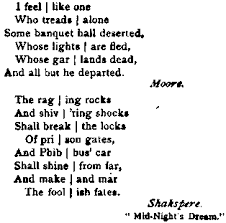
The development of literacy gave rise to more personal, shorter poems intended to be sung. These are called lyrics, which derives from the Greek lura or lyre, the instrument that was used to accompany the performance of Greek lyrics from about the seventh century BC onward. The Greek's practice of singing hymns in large choruses gave rise in the sixth century BC to dramatic verse, and to the practice of writing poetic plays for performance in their theatres. In more recent times, the introduction of electronic media and the rise of the poetry reading have led to a resurgence of performance poetry in the lyric genre.
KAVYA
Kavya, highly artificial Sanskrit literary style employed in the court epics of India from the early centuries ad. It evolved an elaborate poetics of figures of speech, among which the metaphor and simile predominate. Other characteristics of the style are hyperbole, the careful use of language to achieve a particular effect, a sometimes ostentatious display of erudition, and an adroit use of varied and complicated metres—all applied to traditional subjects and themes derived from early popular epics.
The style finds its classical expression in the so-called mahakavya (“great poem”), in the strophic lyric (a lyric based on a rhythmic system of two or more lines repeated as a unit), and in the Sanskrit theatre. The great masters of the kavya form (which was exported to Java) were Ashvaghosa, Kalidasa, Bana, Dandin, Magha, Bhavabhuti, and Bharavi.
The earliest surviving kavya literature was written by Ashvaghosa, a Buddhist. Two works by him, both in the style of mahakavya, are extant: the Buddhacarita (“Life of the Buddha”) and the Saundarananda (“Of Sundari and Nanda”). In his mastery of the intricacies of prosody and the subtleties of grammar and vocabulary, Ashvaghosa anticipated the style of the Hindu mahakavya authors. The kavya remains influential in modern Indian languages and literatures. Rhetorical prose kavya also exist, notable for their use of compound nouns.
Historical Kavyas deal with the contemporary Kings and the style also depended on courtly patronage. A Kashmiri poet Jalhana was a member of the Sabha of Alarhkara. He wrote an account of the life of the king of Rajapuri, Somapalavilasa, who was conquered by Sussala. The tedious Jain monk Hem Chandra (1088-1172) wrote Kumarapala Charita or Dvyashrayakavya while the Chalukya king of Anhilvad, Kumarapala, was reigning and at the pinnacle of his fame about the year 1163.
The second name of the poem is so as it consists of two parts, one has twenty Sanskrit cantos in Sanskrit and the other has eight Prakrit sections. The poem includes some account of the ancestors of his hero. It has a distinct value for the history of Chalukyas. However Hem Chandra was a sincere Jain who saw things deformed by his devotion to his religion. His cantos (xvi-xx) celebrate Kumarapala`s rule and represents the king as a loyal follower of the principles of Jainism.
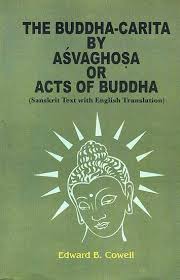
The poem Prithvirajavijaya is an account of the victories of the king of Ajmer and Delhi, Prithviraj who won over Sultan Shihab-ud-din Ghori in 1191. The poem seems to have been written just after that victory. It is an unfinished piece of composition. The author is uncertain; however there is a probability of him being a Kashmirian, as is suggested by his imitation of Bilhana`s style.
A minister of the princes of Gujarat, the Vaghelas, Lavana-prasada and Viradhavala is considered responsible for the writing of two eulogies. One being the Kirtikaumudi of Somesvara Datta (1179-1262) and the other is the eulogy of Vastupala, who was an excellent minister of a type well known in Indian history. It emphasizes on various aspects of Indian political and social life. The Surathotsava in fifteen cantos by the same author is probably a political allegory, as it ends with account of the poet`s own history. Sukrtasamkirtana by Arisinha is another panegyric of the thirteenth century that has been written in eleven cantos which is of great historical value. Sarvananda had composed a panegyric of a pious Jain layman who aided the people of his town by building new walls and providing them great support in the terrible famine of Gujarat.
Ramapdacharita of Sandhya-kara Nandin has historical events vaguely. The feats of the powerful king Ramapala of Bengal have been described. The Rajendrakarnapura of Sambhu is a panegyric of Harsha Deva of Kashmir at whose court he also wrote the Anyoktimuktalatdgataka.
Finally is the work of the Kashmir writers who continued the Rajatarangini, Jonaraja, who died in 1459. His pupil carried on the tale to some years after the annexation of Kashmir by Emperor Akbar. However their work has no originality or merit. The total of their work is not more than half that of the Rajatarangini.
MAHAKAVYA
Mahakavya, a particular form of the Sanskrit literary style known as kavya. It is a short epic similar to the epyllion and is characterized by elaborate figures of speech.
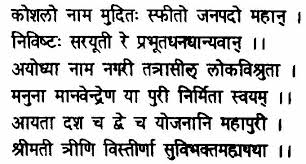
In its classical form, a mahakavya consists of a variable number of comparatively short cantos, each composed in a metre appropriate to its particular subject matter. The subject matter of the mahakavya is taken from the epic. Most mahakavyas display such set pieces as descriptions of cities, oceans, mountains, the seasons, the rising of the sun and moon, games, festivals, weddings, embassies, councils, wars, and triumphs. One characteristic of the genre is that the strophes, or stanzas, though intended to be part of a narrative sequence, are capable of standing alone. Each conveys one idea or develops one image, not explicitly but by double meaning and inference. Traditionally there are several model mahakavyas, including two by Kalidasa and one each by Bharavi, Magha, and Sriharsa. To some critics, the preoccupation with technique, the triumph of form over substance, appears to have spelled the doom of the mahakavya. The Bhattikavya, a poem by Bhatti (probably 6th or 7th century), is sometimes added to the list of model mahakavyas. It illustrates in stanza after stanza, in exactly the proper sequence, the principal rules of Sanskrit grammar and poetics. An example of another kind of excess indulged in by mahakavya writers is the Ramacarita (“Deeds of Rama”) by the 12th-century poet Sandhyakara, which celebrates simultaneously the hero-god Rama and the poet’s own king, Ramapala of Bengal. The mahakavya has been used by modern poets to commemorate such noteworthy individuals as Mahatma Gandhi and Jawaharlal Nehru.

Mahākāvya (lit. great kāvya, court epic), also known as sargabandha, is a genre of Indian epic poetry in classical Sanskrit literature. The genre is characterised by ornate and elaborate descriptions of scenery, love, battles and so on — in short, everything that tests a poet's skill at description. Typical examples of mahākāvya are the Kiratarjuniya and the Shishupala Vadha.
It is considered the most prestigious form in Sanskrit literature. The genre evolved from the earlier epics, the Mahabharata and the Ramayana. Despite the length of mahākāvyas (15-30 cantos, a total of about 1500-3000 verses), they are still much shorter than the Ramayana (500 cantos, 24000 verses) and the Mahabharata (about 100000 verses).
Characteristics of Mahakavya
In the mahākāvya genre, more emphasis was laid on description than on narration. Indeed, the traditional characteristics of a mahākāvya are listed as:
• It must take its subject matter from the epics (Ramayana or Mahabharata), or from history.• It must help further the four goals of man (Purusharthas)
• It must contain descriptions of cities, seas, mountains, moonrise and sunrise, and "accounts of merrymaking in gardens, of bathing parties, drinking bouts, and love-making. It should tell the sorrow of separated lovers and should describe a wedding and the birth of a son. It should describe a king's council, an embassy, the marching forth of an army, a battle, and the victory of a hero".
The classical examples
Tradition identifies five works as model mahākāvya:• Raghuvaṃśa by Kālidāsa : The Raghu dynasty, in 19 cantos (about 1564 verses).
• Kumārasambhava by Kālidāsa : The wedding of Shiva and Parvati, and the birth of Kumara, in 17 cantos.
• Kirātārjunīya by Bharavi : A battle between Arjuna and Shiva from the Mahabharata, 18 cantos.
• Śiśupāla-vadha by Māgha : The slaying of Shishupala by Krishna, 22 cantos (about 1800 verses).
• Naiśadha-carita by Sri-Harṣa : On the life of King Nala and Queen Damayanti, 22 cantos.
To this list, sometimes a sixth one is also added.
• Bhaṭṭikāvya , by Bhaṭṭi : Describes the events of the Ramayana and simultaneously illustrates the principles of Sanskrit grammar, 22 cantos.
INDIAN EPICS
• MAHABHARATA:
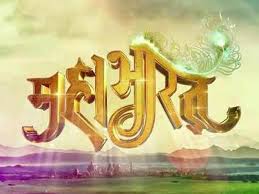
The Mahabharata tells the story of two sets of paternal first cousins--the five sons of the deceased king Pandu (the five Pandavas and the one hundred sons of blind King Dhritarashtra--who became bitter rivals, and opposed each other in war for possession of the ancestral Bharata kingdom with its capital in the "City of the Elephants," Hastinapura , on the Ganga river in north central India. What is dramatically interesting within this simple opposition is the large number of individual agendas the many characters pursue, and the numerous personal conflicts, ethical puzzles, subplots, and plot twists that give the story a strikingly powerful development.
The five sons of Pandu were actually fathered by five Gods (sex was mortally dangerous for Pandu, because of a curse) and these heroes were assisted throughout the story by various Gods, sages, and brahmins, including the great sage Krishna Dvaipayana Vyasa (who later became the author of the epic telling this story), who was also their actual grandfather (he had engendered Pandu and the blind Dhrtarastra upon their nominal father's widows in order to preserve the lineage). The one hundred sons of the blind king Dhartarashtra, on the other hand, had a grotesque, demonic birth, and are said more than once in the text to be human incarnations of the demons who are the perpetual enemies of the devotees of the lord. The most dramatic figure of the entire Mahabharata, however, is Sri Krishna who is the supreme personality of Godhead himself, descended to earth in human form to reestablish his devotees as care takers of the earth, and who practice Dharma. Krishna Vasudeva was the cousin of both parties, but he was a friend and advisor to the Pandavas, became the brother-in-law of Arjuna , and served as Arjuna's mentor and charioteer in the great war. Krishna Vasudeva is portrayed several times as eager to see the war occur, and in many ways the Pandavas were his human instruments for fulfilling that end.
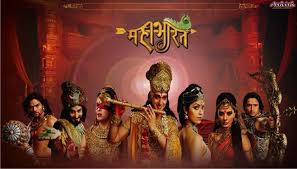
The Dhartarashtra party behaved viciously and brutally toward the Pandavas in many ways, from the time of their early childhood. Their malice displayed itselfwhen they took advantage of the eldest Pandava, Yudhishthira (who had by now become the ruler of the world) in a game of dice: The Dhartarashtras 'won' all his brothers, himself, and even the Pandavas' common wife Draupadi They humiliated all the Pandavas and physically abused Draupadi; they drove the Pandava party into the wilderness for twelve years, and the twelve years of exile had to be followed by the Pandavas' living somewhere in society, in disguise, without being discovered.
The Pandavas fulfilled their part of that bargain by living out side the kingdom, but the evil leader and eldest son of Dhartarashtra, Duryodhana , was unwilling to restore the Pandavas to their half of the kingdom when the thirteen years had expired. Both sides then called upon their many allies and two large armies arrayed themselves on 'Kuru's Field' (Kuru was one of the eponymous ancestors of the clan), eleven divisions in the army of Duryodhana against seven divisions for Yudhishthira. Much of the action in the Mahabharata is accompanied by discussion and debate among various interested parties, and the most famous dialog of all time, Krishna Vasudeva's ethical lecture and demonstration of his divinity to his devotee and friend Arjuna (the Holy Bhagavad Gita appeared in the Mahabharata just prior to the commencement of the world war. Several of the important ethical and theological themes of the Mahabharata are tied together in this Gita, and this "Song of the Blessed One" has exerted much the same sort of powerful and far-reaching influence in the Vedic Civilization that the New Testament has had in the Christian world. The Pandavas won the eighteen day battle, but it was a victory that deeply troubled all except those who were able to understand things on the divine level (chiefly Krishna, Vyasa, and Bhishma the Bharata patriarch who was symbal of the virtues of the era now passing away). The Pandavas' five sons by Draupadi, as well as Bhimasena and Arjuna Pandava's two sons by two other mothers (respectively, the young warriors and Abhimanyu, were all tragic victims in the war. Worse perhaps, the Pandava victory was won by the Pandavas slaying, in succession, four men who were like fathers to them: Bhishma, their teacher Drona , Karna (who was, though none of the Pandavas knew it, the first born, pre-marital, son of their mother), and their maternal uncle Shalya (all four of these men were, in succession, 'supreme commanders' of Duryodhana's army during the war). Equally troubling was the fact that the killing of the first three of these 'respected elders,' and of some other enemy warriors as well, was accomplished only through ' trickery', most of which were suggested by Krishna Vasudeva as absolutely required by the circumstances.
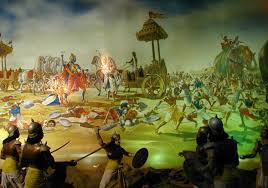
The ethical gaps were not resolved to anyone's satisfaction on the surface of the narrative and the aftermath of the war was dominated by a sense of horror and malaise. Yudhishthira alone was terribly troubled, but his sense of the war's wrongfulness persisted to the end of the text, in spite of the fact that everyone else, from his wife to Krishna Vasudeva, told him the war was right and good; in spite of the fact that the dying patriarch Bhishma lectured him at length on all aspects of the Good Law (the Duties and Responsibilities of Kings, which have rightful violence at their center; the ambiguities of Righteousness in abnormal circumstances; and the absolute perspective of a beatitude that ultimately transcends the oppositions of good versus bad, right versus wrong, pleasant versus unpleasant, etc.); in spite of the fact that he performed a grand Horse Sacrifice as expiation for the putative wrong of the war. These debates and instructions and the account of this Horse Sacrifice are told at some length after the massive and narrative of the battle; they form a deliberate tale of pacification that aims to neutralize the inevitable reactions of the war.
In the years that follow the war Dhritarashtra and his queen Gandhari , and Kunti , the mother of the Pandavas, lived a life of asceticism in a forest retreat and died with yogic calm in a forest fire. Krishna Vasudeva departed from this earth thirty-six years after the war. When they learned of this, the Pandavas believed it time for them to leave this world too and they embarked upon the 'Great Journey,' which involved walking north toward the polar mountain, that is toward the heavenly worlds, until one's body dropped dead. One by one Draupadi and the younger Pandavas died along the way until Yudhishthira was left alone with a dog that had followed him all the way. Yudhishthira made it to the gate of heaven and there refused the order to drive the dog back, at which point the dog was revealed to be an incarnate form of the God Dharma (the God who was Yudhishthira's actual, physical father), who was there to test Yudhishthira's virtue. Once in heaven Yudhishthira faced one final test of his virtue: He saw only the Dhartarashtra Clan in heaven, and he was told that his brothers were in hell. He insisted on joining his brothers in hell, if that were the case! It was then revealed that they were really in heaven, that this illusion had been one final test for him.
• RAMAYANA:

The Ramayana is one of the two great Indian epics,the other being the Mahabharata. The Ramayana tells about life in India around 1000 BCE and offers models in dharma. The hero, Rama, lived his whole life by the rules of dharma; in fact, that was why Indian consider him heroic. When Rama was a young boy, he was the perfect son. Later he was an ideal husband to his faithful wife, Sita, and a responsible ruler of Aydohya. "Be as Rama," young Indians have been taught for 2,000 years; "Be as Sita."
The original Ramayana was a 24,000 couplet-long epic poem attributed to the Sanskrit poet Valmiki. Oral versions of Rama's story circulated for centuries, and the epic was probably first written down sometime around the start of the Common Era. It has since been told, retold, translated and transcreated throughout South and Southeast Asia, and the Ramayana continues to be performed in dance, drama, puppet shows, songs and movies all across Asia.
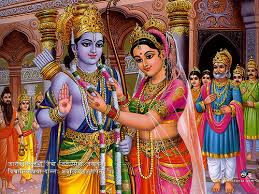
From childhood most Indians learn the characters and incidents of these epics and they furnish the ideals and wisdom of common life. The epics help to bind together the many peoples of India, transcending caste, distance and language. Two all-Indian holidays celebrate events in the Ramayana. Dussehra, a fourteen-day festival in October, commemorates the siege of Lanka and Rama's victory over Ravana, the demon king of Lanka. Divali, the October-November festival of Lights, celebrates Rama and Sita's return home to their kingdom of Ayodhya Prince Rama was the eldest of four sons and was to become king when his father retired from ruling. His stepmother, however, wanted to see her son Bharata, Rama's younger brother, become king. Remembering that the king had once promised to grant her any two wishes she desired, she demanded that Rama be banished and Bharata be crowned. The king had to keep his word to his wife and ordered Rama's banishment. Rama accepted the decree unquestioningly. "I gladly obey father's command," he said to his stepmother. "Why, I would go even if you ordered it."
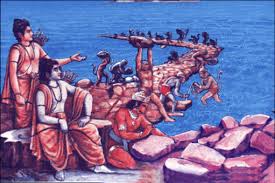
When Sita, Rama's wife, heard Rama was to be banished, she begged to accompany him to his forest retreat. "As shadow to substance, so wife to husband," she reminded Rama. "Is not the wife's dharma to be at her husband's side? Let me walk ahead of you so that I may smooth the path for your feet," she pleaded. Rama agreed, and Rama, Sita and his brother Lakshmana all went to the forest.
When Bharata learned what his mother had done, he sought Rama in the forest. "The eldest must rule," he reminded Rama. "Please come back and claim your rightful place as king." Rama refused to go against his father's command, so Bharata took his brother's sandals and said, "I shall place these sandals on the throne as symbols of your authority. I shall rule only as regent in your place, and each day I shall put my offerings at the feet of my Lord. When the fourteen years of banishment are over, I shall joyously return the kingdom to you." Rama was very impressed with Bharata's selflessness. As Bharata left, Rama said to him, "I should have known that you would renounce gladly what most men work lifetimes to learn to give up."
Later in the story, Ravana, the evil King of Lanka, (what is probably present-day Sri Lanka) abducted Sita. Rama mustered the aid of a money army, built a causeway across to Lanka, released Sita and brought her safely back to Aydohya. In order to set a good example, however, Rama demanded that Sita prove her purity before he could take her back as his wife. Rama, Sita and Bharata are all examples of persons following their dharma.
This lesson focuses on how the Ramayana teaches Indians to perform their dharma. Encourage students to pick out examples of characters in the epic who were faithful to their dharma and those who violated their dharma. Mahatma Gandhi dreamed that one day modern India would become a Ram-rajya.
• SHAKUNTALA:
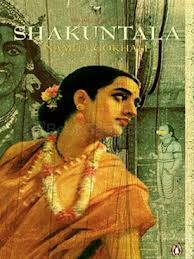
Abhijñanashakuntala, or Shakuntala, is Kalidasa’s best-known play, and, perhaps the best known play of the classical Sanskrit repertoire. The play takes its title from one of its central characters, a young woman raised in a forest hermitage. Like others of Kalidasa’s heroines, however, the young woman is not merely a hermit. Her forest life is temporary, and she comes into her real identity—an identity of which she is mostly unaware when the play begins—through her interaction with a king during the course of the play.
Shakuntala reiterates other themes that are common to Kalidasa’s other plays. Like Pururavas in Vikramorvashiya, Duhshanta spends a chunk of the play—most of Act Six—lamenting Shakuntala’s absence and his part in it.

In the end, the play demonstrates a consistent principle of Sanskrit drama. As opposed to the Aristotelian vision of dramatic characters to begin in a particular condition at a specific plot point and develop over the course of succeeding plot points so as to be different following the climactic culmination of plot points, the characters of Shakuntala have changed little in the end. The play does have a plot, and the events affect the characters greatly. But the conclusion of the play finds Duhshanta and Shakuntala and their son going to the palace to live with each other happily ever after, just as the ascetic in the hermitage promises in the first act. In Kalidasa’s play, circumstances of plot may divert the characters from what they are as the play begins. But the characters are ultimately fixed entities who do not “learn” through the play so as to become something else. Instead, characters must return to what they are.
REFERNCES AND BIBILOGRAPHY
1. http://www.yukon-news.com/arts/poet-goes-from-newsprint-to-verse/2. http://www.nytimes.com/2006/02/14/international/europe/14poem.html
3. https://en.wiktionary.org/wiki/aide-m%C3%A9moire#English
4. For one recent summary discussion, see Frederick Ahl, The Odyssey Re-Formed (1996). Others suggest that poetry did not necessarily predate writing. See, for example, Jack Goody, The Interface Between the Written and the Oral (1987).
5. UCSC Daniel Seldon Professor of AfroAsiatic studies
6. See, for example, Ribeiro, Anna Christina. 'Intending to Repeat: A Definition of Poetry'. Journal of Aesthetics and Art Criticism 65:2, 2007.
7. Abolqasem Ferdowsi, Dick Davis trans., Shahnameh: The Persian Book of Kings (2006) ISBN 0-670-03485-1
8. For example, in the Arabic world, much diplomacy was carried out through poetic form in the 16th century. See Trickster's Travel's, Natalie Zemon Davis (2006).
9. Examples of political invective include libel poetry and the classical epigrams of Martial and Catullus.
10. For example, many of Ibn Sina's medical texts were written in verse.
11. Aristotle's Poetics, Heath (ed) 1997.
12. Ibn Rushd (Averroes) wrote a commentary on Aristotle's Poetics, replacing the original examples with passages from Arabic poets. See for example, W. F. Boggess, 'Hermannus Alemannus' Latin Anthology of Arabic Poetry,' Journal of the American Oriental Society, 1968, Volume 88, 657-70, and Charles Burnett, 'Learned Knowledge of Arabic Poetry, Rhymed Prose, and Didactic Verse from Petrus Alfonsi to Petrarch', in Poetry and Philosophy in the Middle Ages: A Festschrift for Peter Dronke, 2001. ISBN 90-04-11964-7.
13. See, for example, Paul F Grendler, The Universities of the Italian Renaissance, Johns Hopkins University Press, 2004. ISBN 0-8018-8055-6 (for example, page 239) for the prominence of Aristotle and the Poetics on the Renaissance curriculum.
